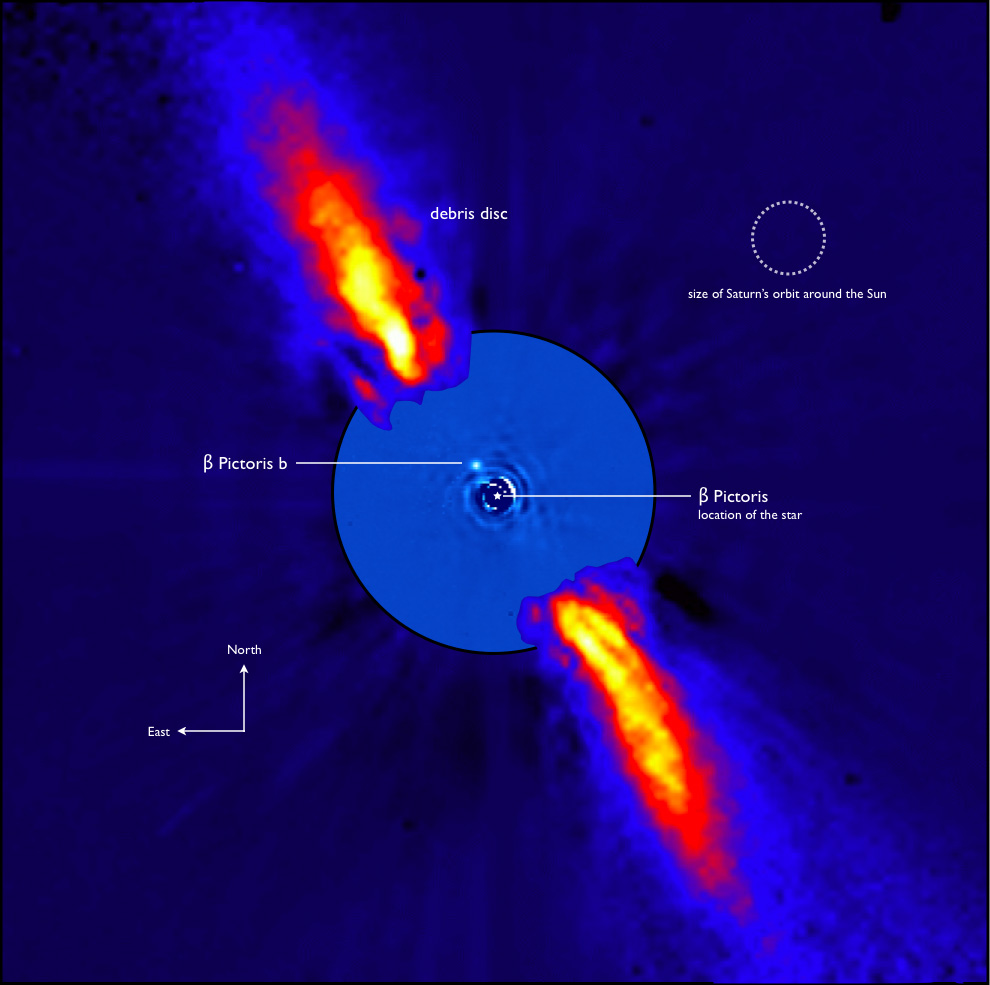Astrophysicist Jason Wang from Northwestern University has created a record time-lapse. It demonstrates 17 years from the life of an exoplanet in the Beta Pictoris system.

Beta Pictoris is a star that is 1.75 times more massive and 8.7 times brighter than the Sun, located at a distance of 63 light-years from Earth. It is very young, its age does not exceed 20 million years. Beta Pictoris is still surrounded by a large amount of dust and debris left over from the formation of the system.
In 2003, astronomers managed to discover an exoplanet at Beta Pictoris. This is a super-Jupiter — a gas giant that has about 11 times the mass of Jupiter. It makes one orbit around its star in 20 to 21 years. Since the exoplanet was formed quite recently by astronomical standards, its atmosphere is still warmed up to high temperatures reaching 1500 °C. Due to this, it emits a lot of infrared radiation, which makes it possible to take direct pictures of it.
Jason Wang decided to take advantage of this circumstance to create the longest time-lapse, demonstrating how the gas giant orbits around the Beta Pictoris. To do this, he took data from 17 years of observations (from 2003 to 2020) collected by the European Southern Observatory and the Gemini Observatory.
Further, Wang applied a number of image processing techniques to unify the data and fill in the gaps in the observations of the Beta Pictoris. One of the most serious problems was the glare from the star. When an exoplanet came too close to Beta Pictoris, the light completely eclipsed it. For these sections, Wang marked it with the letter x so that viewers could still trace the path of the gas giant.
As a result of all these efforts, Wang managed to create a record time-lapse covering approximately 75% of one orbit of the exoplanet around Beta Pictoris. According to the astrophysicist, he needs another six years of data to get a video showing its full orbit.
According to https://phys.org
Follow us on Twitter to get the most interesting space news in time
https://twitter.com/ust_magazine
